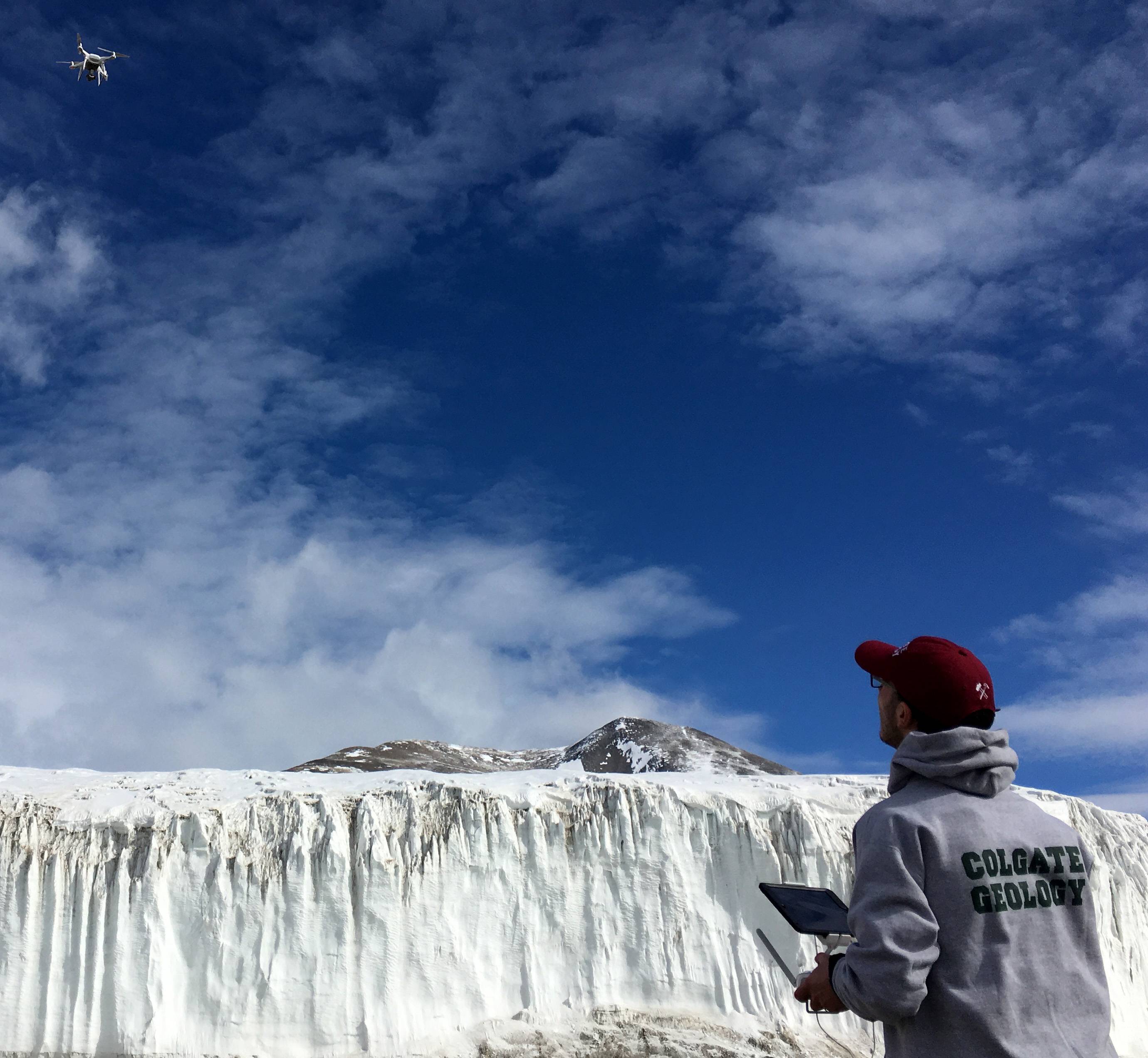A new $500,000 National Science Foundation (NSF) grant will help Geologist Joe Levy study permafrost thaw in Antarctica and create a new integrated education plan for training student research drone pilots.
The five-year grant will enable Levy to take four Colgate students to Antarctica to assist with mapping wetlands and to work with another six in the lab, in an effort to better understand how thawing permafrost impacts carbon sequestration and resulting mineral runoff in surrounding oceans.
To do this, Levy is planning to take an innovative approach to the research by attaching spectrometers to drones to measure soil saturation.
“No one has ever put these spectrometers on drones to do it that way,” Levy said. “Instead of taking one soil sample at a time, we can take tens of thousands of measurements in a few days, without trampling on the ecosystem.”
Spectrometers, Levy said, are typically used for plant health measurements. But, in the cold desert of Antarctica, there are no plants to get in the way of data collection related to soil moisture. During the warm months of December and January, there are ribbons of wet soil from permafrost melt that snake their way down hillsides, he said, and this moisture can range from damp soils to deep mud puddles.
“My real hope is that we better understand where Antarctic permafrost is thawing and how that plays into climate change. If you start incrementally adding more water to the soil, all sorts of things happen,” Levy said. “Not only does the soil capture more carbon, but it also dumps more minerals into the ocean.”
Levy likens the climate impact of wet soil in these areas to that of a wet towel. For example, a dry towel can be used to insulate against heat when someone picks up a hot tea kettle. But if that towel is moist, it no longer insulates well, and the heat can transfer to an unsuspecting hand.
“When the ground is dry, it keeps the permafrost nice and frozen, but when it gets wet, the permafrost thaws more quickly,” Levy said.
Levy called the grant funding, only the second of its kind in Colgate history, career-changing. At the conclusion of the grant funding, a new Geoscience UAV Academy, which will provide comprehensive instruction at the undergraduate level, will be available as a teaching resource for the geoscience community at Colgate and around the world.
“We want folks to think of drones like they do PowerPoint or any other tool,” Levy said. “This builds upon nearly a decade of research. We want to answer the question of how Antarctica wetlands are evolving, and how do we prepare students to engage with it?”
